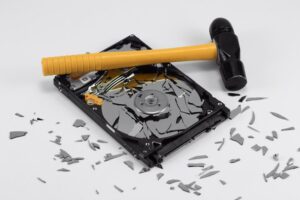The Impact of Artificial Intelligence on the Art Industry

Unless you’ve been living in a cave, you probably know that Artificial Intelligence is one of the top emerging technology trends nowadays. Don’t just think about those movies showing AI robots. Everything from your car’s navigation to your phone’s face recognition and digital assistant classifies as AI. But apart from your daily life, AI has also been integrated into many industries. One such example is the art world. That might come as a surprise for many, but times are changing. To better understand what’s happening, look at the impact of Artificial Intelligence on the art industry.
Understanding the concept
You’ve probably heard people mentioning AI on the news or in the movies, but they rarely take the time to explain it. Artificial Intelligence is a science that develops intelligent computer systems. Specifically, these systems can perform various tasks that usually require human intelligence.
The main reason why Artificial Intelligence will change the future is that it has a vast range of applications. Some include education, transport, healthcare, finance, and even art. Now, art is abstract and subjective. Therefore it can be a bit difficult to understand the link. So, let’s dive deeper.
The impact of Artificial Intelligence on the art industry
Now that you know what AI entails let’s see how it influences the art industry. The most important thing to remember is that we’re not suggesting that it can replace the artist. Artists can use this technology to learn, get inspired, experiment more, and ease some of their tasks.
Because AI can learn and mimic various art techniques, you can even use it to perform repetitive tasks. As a result, you’ll have much more time to develop new ideas. Moreover, it offers you a variety of new tools to play with. So, to better understand the impact of Artificial Intelligence on the art industry, let’s dive into how you can use it.
No. 1 It facilitates novel editing
Writing a novel takes a long time because you constantly have to go back and forth to assess your work. Not to mention that you can hardly be objective. However, some Artificial Intelligence tools can help you edit and identify discrepancies. That helps you save precious time and can improve your writing.
No. 2 It gives you feedback
You can use AI tools to analyze your work and give you feedback. It doesn’t matter if it’s a novel or a painting. The system will tell you what it sees. It won’t lie to avoid hurting your feelings, as a friend or family member would sometimes do. That offers you the chance to change your perspective and improve your work.
No. 3 It helps you generate more artwork
We are only human. Even if you work day and night, you’ll never be able to generate the same volume of art as an AI tool by hand. Therefore, AI is the solution if you’re hired to fill an entire wall or building with your art in a limited amount of time. You can feed it your original artwork so that it can generate pieces that mimic your artistic style.
No. 4 It helps you express yourself even if you’re not an artist
Art is a form of self-expression that anyone can practice. Moreover, it has many benefits for your mental health. For example, it can help you relax, focus on the present, and release all your negative thoughts and feelings so that you can start healing. That’s why the addiction recovery experts from Archstone Behavioral Health advise people to use art as part of their recovery.
But what if you are not able to? We’re not talking about a lack of talent. We are referring to a physical disability that prevents you from expressing yourself through art. Well, Artificial Intelligence can help you overcome this obstacle. After all, creativity lies in your mind, not your hands. So, you can use AI tools to translate your thoughts and feelings into a piece of art.
No. 5 It speeds up the graphic design process
Graphic design tools represent a vital part of any guide to digital art because the better the tools, the better the artwork. Still, there’s a lot of repetitive work involved until you reach the point where you can get creative. So, why not use AI to speed up this tedious initial stage? Once the system learns your preferences, it can offer suggestions you can apply with a single click.
No. 6 It helps you learn a musical instrument faster
Learning a new instrument takes a lot of time and dedication. Not to mention that you have to rely on the availability of a teacher. However, with AI tools, you can speed up this process. They can substitute your music teacher by offering lessons and feedback. For instance, there are AI tools that teach you to read a music sheet and play the piano. Plus, they prompt you when you miss a key.
No. 7 It makes the photography process much easier
There’s a common misconception that photography is effortless to learn. But there’s more to it than just taking photos. Artists have to pay attention to the three pillars of the photography: shutter speed, aperture, and ISO. These things require many setting adjustments that can make you miss that perfect shot. But AI tools can recommend settings and offer you insight, which makes it much more manageable.
Final thoughts
Artificial Intelligence has become an integral part of our lives. But this is only the beginning. Every day we witness new technological advancements. Thus, it’s hard to imagine what AI tools will be capable of in a few years. Nevertheless, you shouldn’t be scared of the upcoming changes. Machines won’t replace you. But they can help you evolve. As you’ve seen from this article on the impact of Artificial Intelligence on the art industry, these tools can help you achieve many things. Not to mention that they make your life a lot easier. So, why not give them a try?
Author Bio:
Kim J. Allen has been working as a content writer for four years. She desires to keep people up to speed with new technological advancements that will make their lives much easier. In her downtime, she enjoys painting and hiking.






